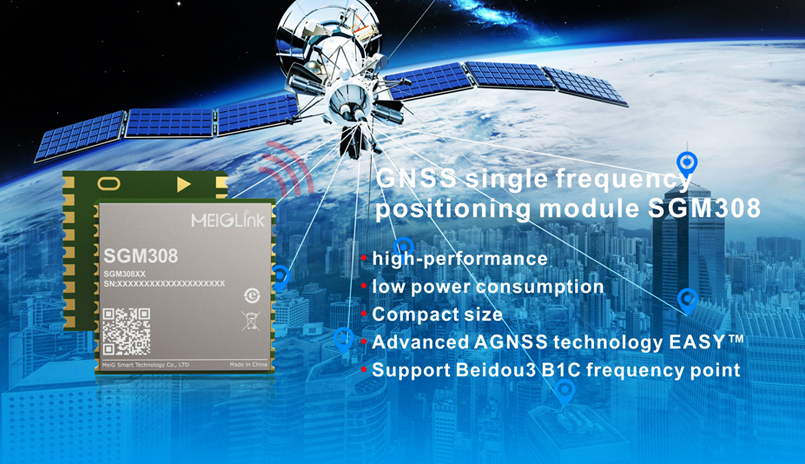In the relentless pursuit of precision and accuracy, the realm of Global Positioning System (GPS) modules has undergone a fascinating evolution. Technological advancements in this space have transformed the way we navigate and interact with the world. From enhanced accuracy and faster acquisition times to the integration of cutting-edge features, this article embarks on a journey to explore the captivating landscape of technological marvels within GPS modules, uncovering the innovations that promise to reshape our navigation experience.

1. Precision Redefined: Sub-Centimeter Accuracy
The quest for pinpoint accuracy in location services has led to a remarkable breakthrough – sub-centimeter accuracy in GPS modules. Traditional GPS modules were accurate within a few meters, but recent advancements have pushed the boundaries, enabling location tracking with sub-centimeter precision. This level of accuracy has far-reaching implications, particularly in industries where precision is paramount, such as agriculture, surveying, and autonomous vehicles.
2. Multi-Constellation Reception: Beyond GPS Alone
In the early days of GPS, reliance on signals from the United States’ Global Positioning System was the norm. However, modern GPS modules now embrace multi-constellation reception, tapping into signals from multiple satellite constellations. With access to GPS, GLONASS (Russia), Galileo (Europe), and BeiDou (China), these modules offer increased reliability, faster signal acquisition, and improved accuracy, especially in challenging urban environments and obstructed landscapes.
3. Real-Time Kinematics (RTK): Dynamic Precision on the Move
Real-Time Kinematics (RTK) represents a paradigm shift in GPS technology, enabling dynamic precision on the move. RTK GPS modules utilize a base station to provide correction signals in real-time, allowing the receiver to achieve centimeter-level accuracy. This innovation finds applications in scenarios where real-time precision is crucial, such as precision agriculture, construction, and even emerging technologies like drone navigation.
4. Faster Acquisition Times: Swift Responses in a Blink
The impatience associated with waiting for GPS signals to lock onto a device is becoming a thing of the past. Technological strides have led to faster acquisition times, allowing GPS modules to establish a connection swiftly, even in challenging environments. This improvement not only enhances the user experience in navigation applications but also proves instrumental in time-sensitive activities like emergency services and search and rescue operations.
5. Assisted GPS (A-GPS): Accelerating Satellite Lock
In urban canyons or areas with limited visibility to the sky, satellite signal acquisition can be a sluggish process. Assisted GPS (A-GPS) comes to the rescue by supplementing satellite data with assistance from cellular networks or Wi-Fi. This collaborative approach accelerates the satellite lock process, ensuring quicker and more reliable location information, especially in scenarios where traditional GPS modules might struggle.
6. Integration of Inertial Sensors: Enhancing Accuracy in Motion
To further refine location accuracy, GPS modules are now integrating inertial sensors such as accelerometers and gyroscopes. These sensors compensate for brief signal losses or disruptions, offering uninterrupted accuracy even when temporarily out of satellite range. This integration proves invaluable in applications like pedestrian navigation or in-vehicle systems where consistent precision during rapid movements is paramount.
7. Geofencing Capabilities: Creating Virtual Boundaries
Geofencing has emerged as a captivating feature facilitated by advancements in GPS modules. This technology allows users to define virtual boundaries or geographical perimeters. When a GPS-enabled device enters or exits these predefined zones, it triggers automated actions or notifications. The applications range from enhancing security systems to providing personalized location-based services in retail and hospitality.
8. Power-Efficient Designs: Prolonging Battery Life
The efficiency of GPS modules is not limited to their navigational prowess but extends to power consumption as well. Modern designs prioritize energy efficiency, employing strategies like adaptive power modes, where the module adjusts its power consumption based on the user’s movement and location needs. This ensures prolonged battery life, a critical factor in the widespread adoption of GPS technology in portable devices.
9. Augmented Reality Integration: Merging Real and Virtual Worlds
The fusion of GPS technology with augmented reality (AR) is creating immersive navigation experiences. AR overlays digital information onto the user’s real-world view, offering enhanced contextual information about their surroundings. Navigation apps utilizing AR provide intuitive visual cues, making it easier for users to navigate unfamiliar environments or follow directions seamlessly.
10. Indoor Positioning Systems: Navigating Beyond Satellite Signals
Traditional GPS modules face limitations in indoor environments where satellite signals may be weak or nonexistent. To address this challenge, Indoor Positioning Systems (IPS) have emerged. These systems utilize a combination of technologies, including Wi-Fi, Bluetooth, and sensors, to provide accurate positioning information within buildings. IPS finds applications in malls, airports, and large complexes, offering indoor navigation capabilities.
Challenges and Considerations: The Road Ahead
Despite the remarkable progress in GPS technology, challenges persist. Urban canyons, dense foliage, and signal interference in certain environments can still pose hurdles. Continued research and development are essential to refining algorithms, mitigating these challenges, and ensuring that GPS modules deliver reliable performance across diverse scenarios.
Conclusion: Navigating the Future with Precision and Innovation
As we navigate the ever-expanding landscape of technological advances in GPS modules, it becomes evident that the future holds even more intriguing possibilities. From sub-centimeter accuracy to real-time kinematics and the seamless integration of augmented reality, GPS technology is evolving at a breathtaking pace. These advancements not only redefine how we navigate the physical world but also unlock new frontiers in industries ranging from agriculture to healthcare. The journey of precision and innovation in GPS modules continues, promising a future where our interactions with the world are not just guided by coordinates but enriched by a tapestry of dynamic and context-aware information.